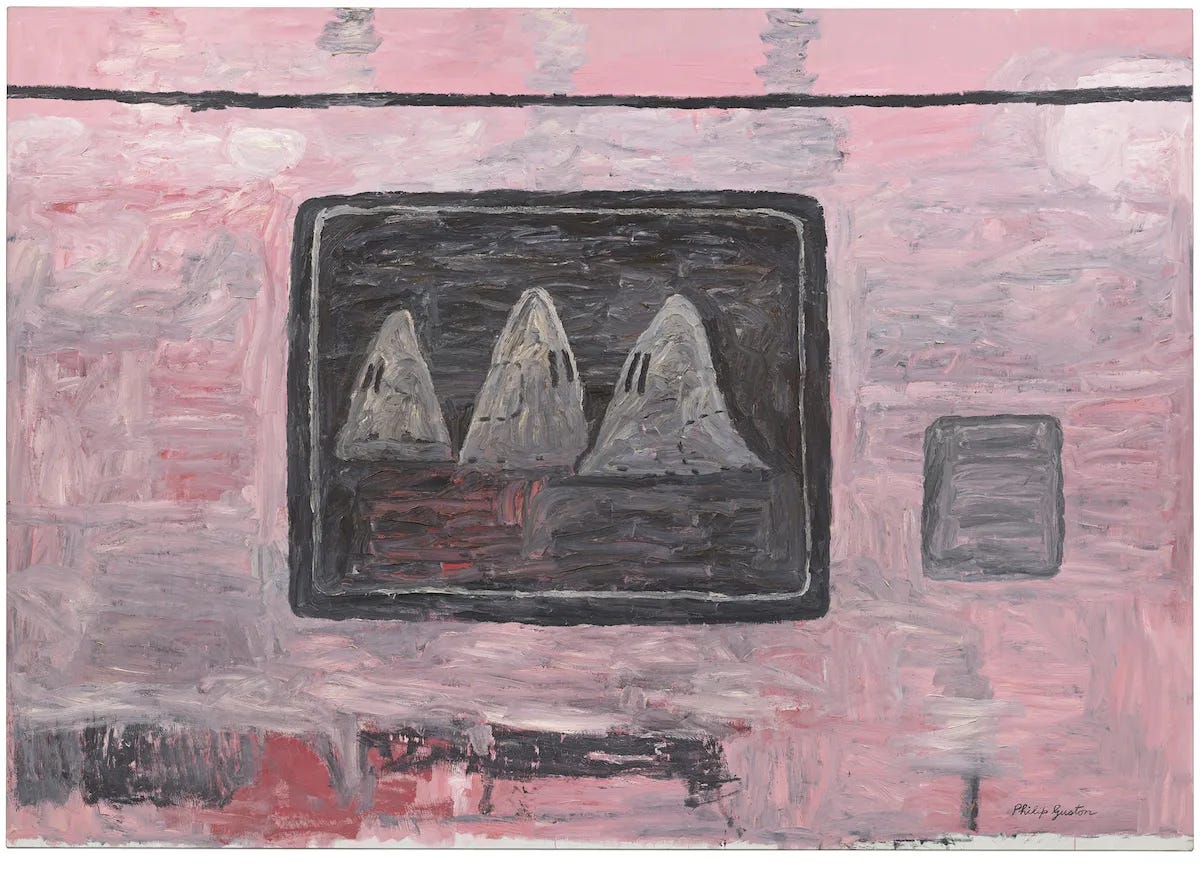Counter-Agency Artifacts #3: Philip Guston at Marlborough Gallery, 1970, by Adam Lehrer
Philip Guston changed art in 1970 by lowering the bar of taste, we salute him for that
American artist Philip Guston grew dissatisfied with abstract expressionism in the ‘60s.
”It is a lie,” he wrote in his notes. “It is an escape from the raw, primal feelings we have about the world and us in it. From America.”
Indeed, the avant-garde began to feel more disembodied and castrated as television was launched and the Information Age changed the fabric of society. How much intrigue could formless painting, opaque in both image and meaning, hold against the all encompassing potency of the television? We’d been transfixed. Television and new media were infinitely more radical than any painting could ever be, and the avant-garde was losing its appeal and its purpose.




